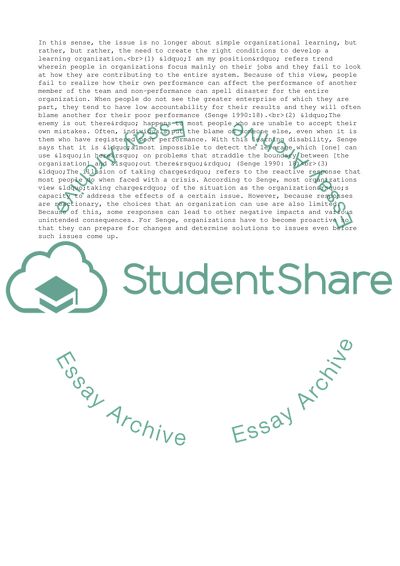Cite this document
(Learning Disabilities are Fatal in Organizations Assignment, n.d.)
Learning Disabilities are Fatal in Organizations Assignment. Retrieved from https://studentshare.org/management/1773230-learning-disabilities-are-fatal-in-organizations-senge-1990
Learning Disabilities are Fatal in Organizations Assignment. Retrieved from https://studentshare.org/management/1773230-learning-disabilities-are-fatal-in-organizations-senge-1990
(Learning Disabilities Are Fatal in Organizations Assignment)
Learning Disabilities Are Fatal in Organizations Assignment. https://studentshare.org/management/1773230-learning-disabilities-are-fatal-in-organizations-senge-1990.
Learning Disabilities Are Fatal in Organizations Assignment. https://studentshare.org/management/1773230-learning-disabilities-are-fatal-in-organizations-senge-1990.
“Learning Disabilities Are Fatal in Organizations Assignment”, n.d. https://studentshare.org/management/1773230-learning-disabilities-are-fatal-in-organizations-senge-1990.


